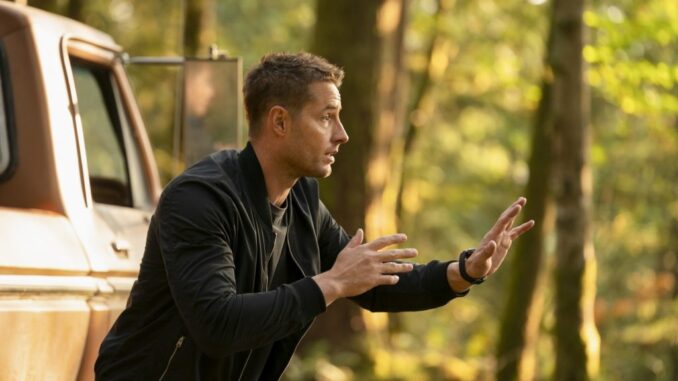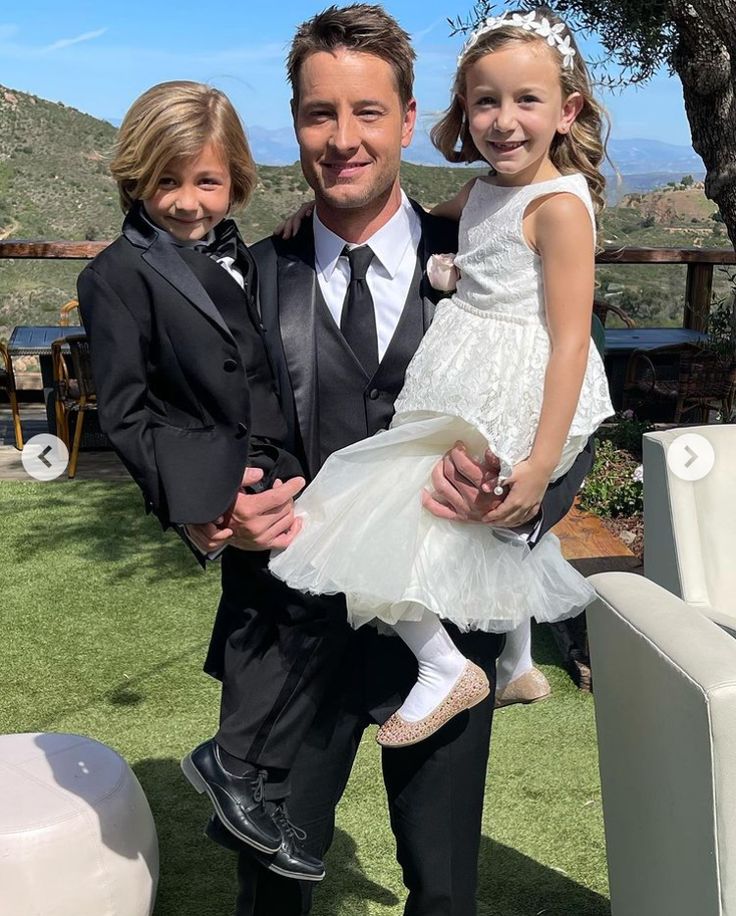
Season 2 of Trackerwas noticeably darker and far more gruesome than the first season. While very few episodes last season involved murder, season 2’s body count was absurdly high. Serial killers featured in multiple episodes, including “Monster,” which included a bloody, headless corpse in one scene and a severed head in another. Cults and weird religious sects were also rife, and one episode involved a government conspiracy found Colter stumbling across the corpses of five agents who had been executed. As such, Colter did a lot more killing in season 2, and it was disappointing to see so many of his cases being resolved with the business end of a gun rather than his wits.
It wasn’t just the rampant murder that was new to this season, there were also other notable differences, enough that it was a little jarring. Tracker season 2 definitely got paranormal and weird, opening up the show to government conspiracies and aliens, witchcraft, two different episodes where a pair of girls go missing because they’re exploring a local urban legend or a bit of folklore, and, in Tracker season 2, episode 16, “The Mercy Seat,” even a brief allusion to the Wendigo. As someone who loves a great cryptid story and doesn’t mind gore, the tonal shift of season 2 was unexpected, and not necessarily in a good way.
I’m not sure why these changes were made, and, judging by this season’s ratings, it may have been a mistake; according to TV Series Finale, Tracker season 2 averaged a .49 rating in the 18-49 demo, a drop of -34.12% from season 1’s .74 rating, and an average viewership of 7.999 million, down from season 1’s 8.29 million average. The show is still an enormous success for CBS, so it’s not as though it’s in danger of suddenly falling off a cliff. Still, those figures are telling, and it’s arguably down to the drastic shift in tone and focus in the sophomore season.
If you’ve been following the show Tracker, you probably noticed something weird going on in Season 2. The tone shifted from the somewhat balanced and gripping vibe of Season 1 to a much darker, death-riddled narrative. But here’s the kicker — this shift felt like it came out of nowhere and without a clear purpose. So, why did Tracker get so grim? Let’s break down the dark descent of Season 2 and what it meant (or didn’t mean) for the story and fans.
The Unexpected Dark Turn: A Quick Overview
Season 1 of Tracker delivered a perfect mix of suspense, character development, and plot twists. It wasn’t too heavy, but it had enough depth to keep viewers hooked. Enter Season 2 — and suddenly, the atmosphere is soaked in gloom, loss, and death. We saw more characters killed off, storylines become bleak, and an almost nihilistic tone creeping in.
But was this darkness earned or just thrown in to raise stakes artificially? Fans and critics alike are asking the same question.
Why Did Season 2 Get So Much Darker?
1. Attempt to Raise the Stakes Dramatically
One of the most common reasons showrunners darken a series is to “raise the stakes.” Killing off characters and showing a grimmer world can make viewers feel that anything is possible. But when this happens without narrative payoff, it just feels gratuitous. Season 2’s approach leaned heavily into shock value, which ultimately alienated many fans.
2. Lack of Clear Story Direction
Unlike Season 1, where every death or dark moment tied into the larger plot, Season 2 seemed scattershot. Deaths were sometimes meaningless, lacking emotional weight or relevance to the overarching storyline. This lack of cohesive direction gave the season a “dark for darkness’ sake” vibe.
How Did The Dark Tone Affect Viewer Engagement?
Polarized Fans and Drop in Ratings
The sudden darkness caused a split in the fan base. Some appreciated the gritty realism and mature themes, while others felt the show lost its charm and became exhausting to watch. The ratings dip in the middle of the season echoed this divide.
Emotional Fatigue Setting In
The nonstop death and despair can wear viewers down emotionally. Instead of being drawn deeper into the story, many found themselves tuning out, unable to handle the relentless bleakness.
Character Deaths in Season 2: Impact vs. Shock
Death Without Purpose
The main gripe with Season 2’s deaths was their lack of impact on character arcs or plot progression. When a key character dies without affecting the narrative significantly, it can feel cheap — like a mere gimmick.
Missed Opportunities for Character Growth
Some deaths in Season 2 robbed the show of exploring complex emotional or psychological layers in surviving characters. Instead of growing through tragedy, many arcs simply ended abruptly.

Comparing Season 1 and Season 2: What Changed?
Tone and Mood
-
Season 1: Balanced with moments of levity and hope
-
Season 2: Overwhelmingly dark and somber
Plot Structure
-
Season 1: Tight, purposeful storytelling
-
Season 2: Loose, often meandering
Character Development
-
Season 1: Deep, gradual arcs
-
Season 2: Interrupted or abruptly ended
The Showrunner’s Vision: A Misstep?
While the creative team likely aimed to explore deeper, darker themes, the execution left much to be desired. It’s a fine line between mature storytelling and alienating your audience — and Season 2 stumbled badly on that edge.
Could the Dark Season 2 Have Been Done Differently?
Absolutely. Here’s what might have helped:
-
Meaningful Deaths: Each loss should drive the story or deepen emotional investment.
-
Balanced Tone: Even in dark stories, moments of hope or humor keep audiences engaged.
-
Character Focus: Use tragedy to fuel character growth, not just shock.
Why Do Shows Sometimes Get Darker in Later Seasons?
This happens a lot in TV. As shows mature, writers often want to explore more serious themes or make the story feel “realer.” But without careful planning, it can feel forced or excessive.
Fan Theories: What Explains Tracker Season 2’s Darkness?
Some fans speculate behind-the-scenes changes — like new writers, budget cuts, or network pressures — caused the tonal shift. Others think it was a deliberate attempt to mimic popular darker shows, but it didn’t suit Tracker’s original vibe.
How Do Darker Seasons Affect Long-Term Show Success?
Shows that go too dark without purpose often face backlash. While some series recover by course-correcting, others lose momentum and end prematurely.
Lessons From Tracker Season 2 For Future TV Writing
-
Always align tone with story purpose
-
Don’t sacrifice character development for shock
-
Remember the audience’s emotional limits
Is There Hope for Tracker Season 3?
If the showrunners listen to fan feedback, Season 3 could return to a more balanced, character-driven approach. Bringing back the elements that made Season 1 great might restore the show’s mojo.
The Role of Death and Darkness in Storytelling
Death and darkness can add depth — but only when used thoughtfully. Randomly killing characters or over-darkening the plot risks alienating viewers.
Why Do Fans Care So Much About Tone and Death in Shows?
Because stories are emotional journeys. Viewers invest time, empathy, and energy into characters. When those elements feel mishandled, fans feel betrayed.
Conclusion: Tracker Season 2’s Darkness Fell Flat
Season 2 of Tracker swung hard into a darker, death-heavy narrative, but without the storytelling backbone to support it. This left fans feeling confused and disconnected. Darkness and death can be powerful storytelling tools — but only when wielded with purpose. Hopefully, future seasons will learn from this misstep and strike a better balance.
